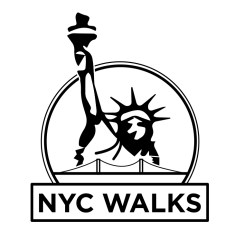The Brooklyn Bridge — “If you believe that, I have a bridge in Brooklyn to sell to you”

Ever since I was a young person, I have used the phrase, “If you believe that, I have a bridge in Brooklyn to sell to you”. The phrase originated because for over a century people have fallen for the con that New York City is selling the Brooklyn Bridge.
George C. Parker (1860-1936), a native New Yorker, was responsible for originating the phrase. Parker, of whose life we know became famous for selling New York City landmarks of all kinds ranging from Madison Square Garden to the Statue of Liberty. He also sold the Metropolitan Museum of Art and even Grant’s tomb as the general’s grandson!
He would set up fake sales offices and forge documents to support his cons. One of his most popular places for spotting rubes or victims was Ellis Island where some of the immigrants came with money to invest in new enterprises. Out-time out-of-town tourists on their first visit to New York comprised another favorite target.
His greatest con was selling the Brooklyn Bridge. Legend claimed that he sold it at least twice a week. He did sell it several times including at least once for $50,000! The new owner would be discovered he was the victim of a con when the New York police officers would stop the “new owners” from setting up toll booths in the middle of the bridge.
The Brooklyn Bridge had been a toll bridge that pedestrians had to pay a penny to cross when it opened for business in 1883. Tens of thousands crossed the bridge every day on the way to work from Brooklyn to Manhattan. When the Brooklyn Bridge first opened, it cost a penny to cross by foot, 5 cents for a horse and rider and 10 cents for a horse and wagon. Farm animals were allowed at a price of 5 cents per cow and 2 cents per sheep or hog. Under pressure from civic groups and commuters, the pedestrian toll was repealed in 1891. The roadway tolls were then rescinded on July 19, 1911 with the support of New York Mayor William J. Gaynor, who declared, “I see no more reason for toll gates on the bridges than for toll gates on Fifth Avenue or Broadway.” On Columbus Day, 1892 a quarter of a million people walked across the bridge in celebration of the quadrennial.
 At one point, George Parker earned the title as “the greatest con man” but he kept on getting caught. Finally, in 1928 upon his third conviction for conning people, Brooklyn Judge Alonzo G. McLaughlin sentenced him to mandatory life imprisonment to Sing Sing Prison, where he died.
At one point, George Parker earned the title as “the greatest con man” but he kept on getting caught. Finally, in 1928 upon his third conviction for conning people, Brooklyn Judge Alonzo G. McLaughlin sentenced him to mandatory life imprisonment to Sing Sing Prison, where he died.
NYC Walks Blog 35 The Brooklyn Bridge — “If you believe that, I have a bridge in Brooklyn to sell you” © 2018 by Dr. Philip Ernest Schoenberg
